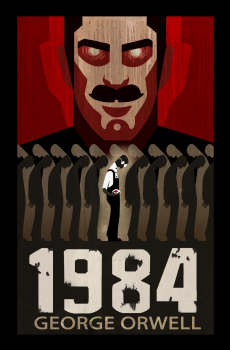
Email: EllaTournes@bexleygs.co.uk
Total Article : 45
About Me:Sixth form student currently studying English Literature, Drama and Theatre Studies, Classical Civilisation and History.

In both ‘Nineteen Eighty-Four’ by George Orwell, and ‘Brave New World’ by Aldous Huxley, there is a presentation of an inherently andocentric society. Neither the actual dystopic societies, nor the authors themselves focus specifically on the plight of women – women are arguably written inaccurately and unfavourably by both Orwell and Huxley. In both novels, women are seemingly undermined and trivialised - the attitudes of the men themselves, and the contexts in which they were writing, have worked to some extent to contaminate the novels, and thrusted a patriarchal paradigm upon them. However, whether the authors can be called outright misogynists is questionable. In my opinion, the presentation and representation of females is lacking in both novels – but, Orwell seems to have more of an awareness of gender. The depiction of hegemonic masculinity, although present in ‘Brave New World’ is far more prevalent and immediate in ‘Nineteen Eighty-Four’. This, by no means, however, makes Orwell’s work any more acceptable from a feminist perspective – Orwell’s misogyny is arguably demonstrated throughout the novel, far more frequently than Huxley’s. Both authors seem to be afflicted with a lack of understanding of women, and the concept of gender – this makes them write female characters in an unconvincing, unrealistic way.
Both Orwell and Huxley present their female characters in a flat, two-dimensional way, assigning them to archetypes that lack depth. Daphne Patai argues that ‘most of the women in Orwell’s narrative hardly figure, except as caricatures’[1]. This argument could be supported by examining the roles of the women that Orwell presents in ‘Nineteen Eighty-Four’, both within the plot and within the society of the novel. The only relevant characters fit into one of two categories – mother, or lover (the lover category then splits itself into ‘frigid’ and ‘promiscuous’ sub-categories). This archetypal notion is also prevalent in Brave New World – the only named female characters either fit into the ‘lover’ category (Lenina and Fanny) or the ‘mother’ category (Linda). The fact that women are pigeon-holed into these two roles perhaps suggests that the authors don’t deem women capable of anything else – they are purely viewed as some sort accessory to the protagonists of the world; males.
The notion of mothering and the word ‘mother’ itself are both seen as dirty and vulgar in the society depicted in ‘Brave New World’. The Controller urges the students he is educating to ‘try to realize what it was like to have a viviparous mother’. The word ‘viviparous’ bears animalistic connotations – conceptually, it dehumanises mothers. It also fits into the realm of scientific zoological jargon, thereby alienating the reader from a concept that they are familiar with: childbirth. The juxtaposition between the warm, natural associations usually held alongside childbirth, and childbirth as it is presented in the novel, creates cognitive dissonance in the mind of the reader. Zoomorphism is also used by Huxley in the Controller’s description of the mother’s role within the household of the past – she is described as ‘periodically teeming’. ‘Teeming’ in this sense, refers to her animalistic fertility – when combined with ‘periodically’ and a suggestion of time, this bears connotations of female menstruation. This ‘period(ic) teeming’ is made more visceral by the description of the home being an ‘unsterilized prison; darkness, disease and smells.’
[1] ‘Gamesmanship and Andocentrism in Orwell’s 1984’ by Daphne Patai
Sources: https://www.google.co.uk/search?q=1984&espv=2&biw=1093&bih=490&source=lnms&tbm=isch&sa=X&ved=0ahUKEwjgjYaylMnQAhWBBcAKHYNXA4cQ_AUIBigB#imgrc=Txq-pfefckJ1YM%3A

0 Comment:
Be the first one to comment on this article.